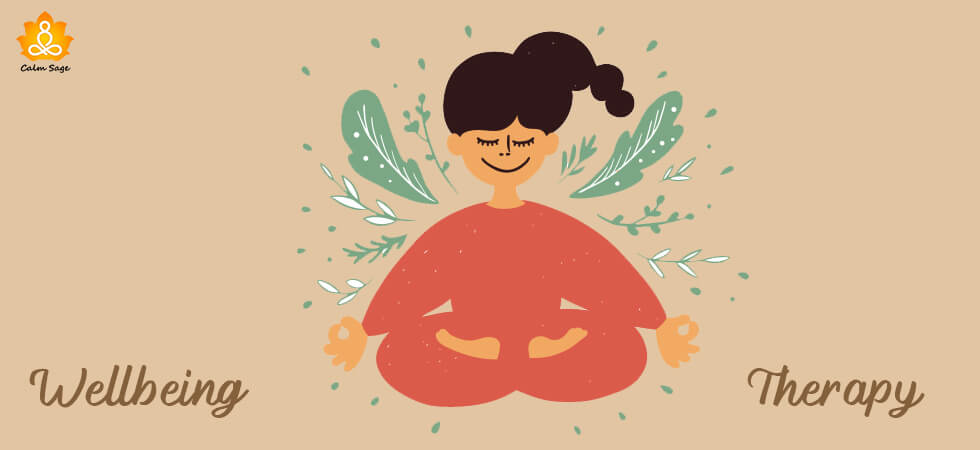Well-Being Therapy: A Resort For Relapsing Depression?

Psychotherapy is recommended to every individual willing to heal from the unusual functioning of the brain and affecting daily lifestyle. However, it is true that many people who undergo therapies fall short of optimal functioning and may relapse back into depression or other disorders. This is where one needs to enable positive psychology in the form of well-being therapy and improve their ill health.
Such relapse may be improved with medications but sometimes frontline treatments are not enough alone for the recovery. Well, being therapy comes into the picture to improve quality of life rather than focusing on ending symptoms of depression.
Also Read: Top 10 Online Therapy and Counseling Programs
What Exactly Is Well-Being Therapy?
Created in the 1990s by Italian psychiatrist Giovanni Fava, this therapeutic approach is meant to improve the recovery rate of people experiencing depression, anxiety, and mental health disorders.
Fava explained that Cognitive Behavioral Therapy is surely the best way to treat depression but it is not workable when the disorder relapses or reoccurs in a human being. The type of therapy which fills the gap of clinical psychology has one another name of Well-Being therapy.
How Does Well-Being Therapy Work?
This therapy is known for its short term techniques. Considering the same, there are 6 dimensions of well-being therapy by Fava including:
- Self-acceptance
- Autonomy
- Environmental mastery
- Personal growth
- Purpose in life
- Positive relationships
Let us go through briefs of these dimensions one by one.
1. Self-Acceptance

Self-acceptance means accepting one’s positive as well as negative qualities and keeping a positive attitude glowing up your life. Some people may not be able to accept themselves completely but the reason lies in their unrealistic expectations as well as perfectionist behavior.
2. Autonomy
The ability to be independent as well as regulating one’s own behavior properly is known as autonomy. When one has a high level of autonomy, they could easily work well with others, establish positivity around and ask for support when needed.
3. Environmental Mastery
As defined by the name itself, environmental mastery means developing the surroundings with one’s own talent and competence. Someone who lacks it may lack a sense of control and cannot enjoy the time with challenges.
4. Personal Growth

Growing yourself towards your own potential and fighting through your own challenges makes you grow personally. It is better to not to set unrealistic goals which could only discourage you.
Also Read: 51 Self Improvement Tips To Change Life
5. Purpose In Life
An individual must find perspective and purpose in life in order to have a direction of moving forward. If you don’t have a purpose, life will remain dissatisfied with self performance. If you cannot find one, learn how to find purpose in life.
6. Positive Relationships
Those who carry warm, trustful and caring relationships are happy and soulful beings. They show empathy and reciprocity to others’ trust and maintain their worthiness in the surroundings.
Related: 4 Ways To Build Healthy Relationship With A Teenager
Where Does Well-Being Therapy Help Clinically?
Well-being therapy is applied to a person after assessing an individual with micro and macro analysis along with the client’s condition. They are asked about the disorders which need to be treated before going forward with well-being therapy. It is given to a person so that
- They can either prevent relapse of a mental health problem or fill the gaps of clinical treatment.
- Speeds up the recovery system by removing the residual symptoms that are bothering in the present or may show up in future.
- Regulation of mood disorders
- Psychological well being in order to provide flexibility, consistency, and resilience.
Stages & Sessions Of Well-Being Therapy
If we wish to understand the stages of WBT, we can divide it into different sections.
1. Beginning Sessions
A few sessions in the beginning stage accounts for the factor if the client has compliance or resistance. The person is asked to observe oneself by keeping a diary or record of the experiences that provide them well-being. The therapist acts as a moderator to show them a way of seeing things in a positive light, especially when the person is loaded with all depressive thoughts.
2. Intermediate Sessions
These sessions come into picture when the good experiences are identified properly. From here, those challenges that create distress in life are asked and challenged. Those thoughts are monitored to encourage the activities that promote well-being.
3. Final Sessions
The six dimensions of psychological well-being are applicable once the above sessions take place in wholesome manner. Each dimension is gradually introduced into the lives of a person and shall accompany a person’s personal well-being.
Wrap-Up
It can be understood that well-being therapy may not be a part of frontline therapy as CBT or other Talk therapies but it is surely an essential aspect to fill the hollows of other therapies.
Have you thought about trying it or ask a loved one to try it? If yes, send us a message at info@calmsage.com and connect with a counselor today for more information.




















